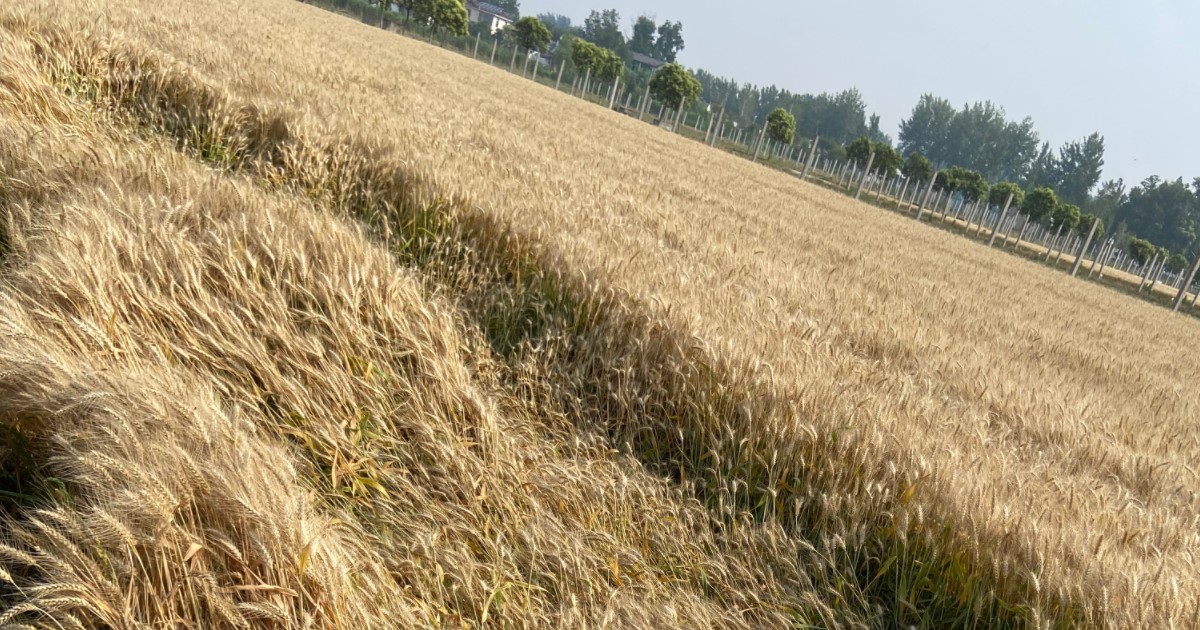Integrated Strategies for Enhancing Lodging Resistance and Yield Performance in Cereal Crops
A special issue of Agronomy (ISSN 2073-4395). This special issue belongs to the section "Innovative Cropping Systems".
Deadline for manuscript submissions: 25 June 2026 | Viewed by 2146

Special Issue Editors
Interests: crop physiology and chemical regulation
Interests: green and efficient chemical regulation strategies for sustainable crop production
Interests: rice high-yield physiology and mechanization research
Special Issues, Collections and Topics in MDPI journals
Special Issue Information
Dear Colleagues,
The conflict between preventing cereal lodging and obtaining high yields is a prevailing challenge that besets modern agriculture. Lodging directly induces yield losses, reduces the quality of grains and hinders mechanized harvesting. With the growing use of high-yield varieties, higher planting densities and increased application of fertilizer, the risk of lodging has become greater. Furthermore, due to the intensification of climate change, extreme weather conditions such as strong winds and rainfall occur more frequently, further impacting the efficacy of high-yield cultivation models. This Special Issue of Agronomy, “Integrated Strategies for Enhancing Lodging Resistance and Yield Performance in Cereal Crops”, seeks to address these issues.
We aim to highlight integrated, sustainable approaches that bridge crop physiology, genetics, agronomy practice, and precision technologies to establish efficient, lodging-resistant cultivation technology that can be used to acquire high yields.
We encourage to contribute studies on high yield and lodging traits, including ideal plant architecture, optimized agronomic practices (e.g., fertilization, irrigation, growth regulators), and advanced tools like sensor-based monitoring or AI-driven modelling.
Dr. Guangyan Li
Dr. Peng Yan
Dr. Yaliang Wang
Guest Editors
Manuscript Submission Information
Manuscripts should be submitted online at www.mdpi.com by registering and logging in to this website. Once you are registered, click here to go to the submission form. Manuscripts can be submitted until the deadline. All submissions that pass pre-check are peer-reviewed. Accepted papers will be published continuously in the journal (as soon as accepted) and will be listed together on the special issue website. Research articles, review articles as well as short communications are invited. For planned papers, a title and short abstract (about 250 words) can be sent to the Editorial Office for assessment.
Submitted manuscripts should not have been published previously, nor be under consideration for publication elsewhere (except conference proceedings papers). All manuscripts are thoroughly refereed through a single-blind peer-review process. A guide for authors and other relevant information for submission of manuscripts is available on the Instructions for Authors page. Agronomy is an international peer-reviewed open access semimonthly journal published by MDPI.
Please visit the Instructions for Authors page before submitting a manuscript. The Article Processing Charge (APC) for publication in this open access journal is 2600 CHF (Swiss Francs). Submitted papers should be well formatted and use good English. Authors may use MDPI's English editing service prior to publication or during author revisions.
Keywords
- cereal yield
- lodging resistance
- integrated management strategies
Benefits of Publishing in a Special Issue
- Ease of navigation: Grouping papers by topic helps scholars navigate broad scope journals more efficiently.
- Greater discoverability: Special Issues support the reach and impact of scientific research. Articles in Special Issues are more discoverable and cited more frequently.
- Expansion of research network: Special Issues facilitate connections among authors, fostering scientific collaborations.
- External promotion: Articles in Special Issues are often promoted through the journal's social media, increasing their visibility.
- Reprint: MDPI Books provides the opportunity to republish successful Special Issues in book format, both online and in print.
Further information on MDPI's Special Issue policies can be found here.







